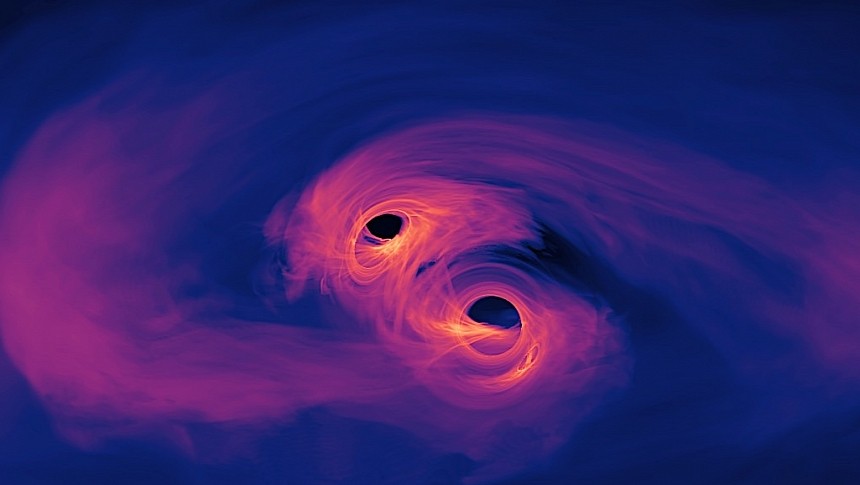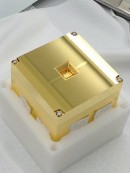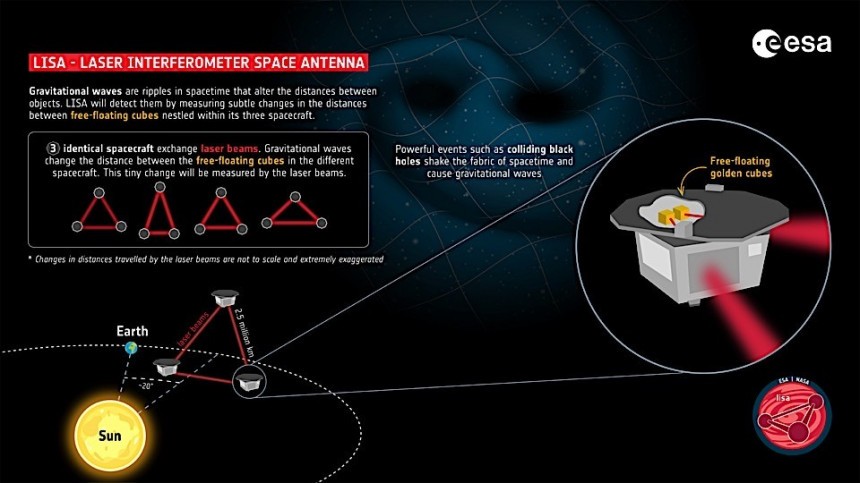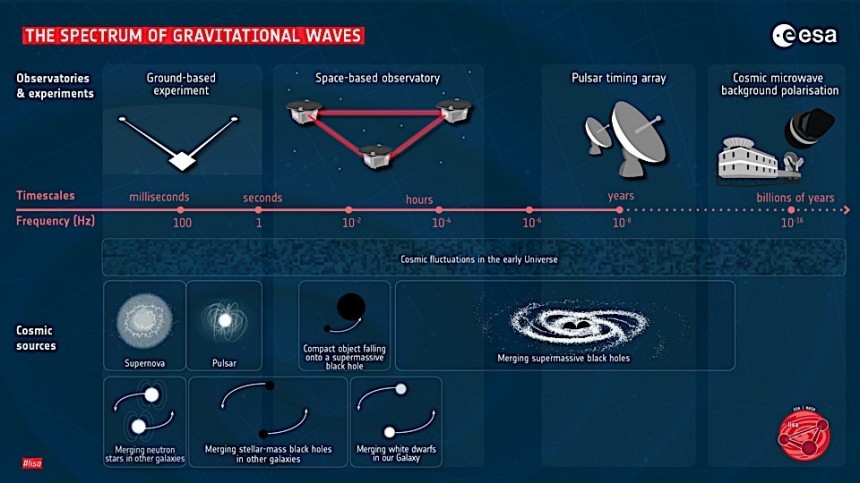Because the American space agency has a lot more projects running, and plans for the future that dwarf anything else on this planet, it's easy to overlook what others are doing. And that's a shame, and just to give an example of why that's so, I'll just tell you Europe is presently planning the most Star Trek-ish mission you've heard in a very long time.
Last week NASA announced the end-of-mission for the Ingenuity Mars helicopter after three years of doing some incredible science over the surface of the Red Planet. Naturally, that caught all of our attention, and we almost missed some incredible developments taking place over in Europe.
It is there from where last week news surfaced of two brand new exciting missions being planned for the start of the next decade: LISA and EnVision. Both are daring enough to potentially change the way we understand our solar system, so we've decided to give them both a closer look.
We'll start today with LISA, which is an acronym for Laser Interferometer Space Antenna. It's a mission that is led and run by the European Space Agency (ESA) but it also involves its American counterpart.
The project is in its early stages, having just been cleared for design and build, but we do know each of the three spacecraft will be gifted with solid gold-platinum cubes (smaller than a Rubik cube) installed at the heart of each of them, and floating freely inside special housings.
These platinum cubes will be used to detect gravitational waves, which is the main mission of the LISA effort.
After launch, the three spacecraft will position themselves behind our planet, trailing it in its orbit around the Sun. Each of the spacecraft will be positioned in a different orbit to form an equilateral triangle with each side measuring 2.5 million km (1.55 million miles).
The spacecraft will communicate with one another by means of laser beams. The cubes I mentioned earlier are there to measure the "tiny changes in the distances between the masses in the different spacecraft," which in turn may point to the presence of gravitational waves.
Building the three spacecraft to be so accurate as to determine changes in the distance of masses "down to a few billionths of a millimeter" is no easy task. As per ESA, the "spacecraft must be designed to ensure that nothing, besides the geometry of spacetime itself, affects the movement of the masses, which are in freefall."
These disturbances are minuscule in the large place that is our Universe and very difficult to detect. In fact, an attempt to measure them on this scale and from space has never been made before, making the LISA spacecraft the first of their kind.
Similar studies have been conducted before from right here on Earth, but placing these ripple detectors in space will allow for the detection and measurement of gravitational waves of lower frequencies.
What this means is that we'll be getting an unprecedented look back in time right to the beginning of time, to just a few seconds after the Big Bang.
Although the exact details of the hardware are not yet known, ESA is hopeful the tech will allow it to detect the most elusive of such signals. They will capture the ripples in spacetime coming from the collision of black holes at the center of galaxies across the entire Universe.
What will we learn from this? Well, for one we'll get a better sense of how things as massive as black holes come to be. Then, we'll get a better understanding of how they evolve, and how they influence the development of the galaxies that spin around them.
The cherry on the cake, LISA will possibly help with more accurately measuring the change in the expansion of the Universe.
ESA plans to begin work on assembling the three spacecraft one year from now – it's unclear at this point exactly who will be building it. The Europeans will handle the spacecraft, launch, and mission operations, while NASA will supply the lasers for the ships, their telescopes, and the charge management devices for the test masses.
The LISA mission is set to depart our planet in 2035 on an Ariane 6 rocket. There is no word on how long the missions will last, but we are promised that "data will be publicly available to the global scientific community to enable a wide array of scientific investigations."
It is there from where last week news surfaced of two brand new exciting missions being planned for the start of the next decade: LISA and EnVision. Both are daring enough to potentially change the way we understand our solar system, so we've decided to give them both a closer look.
We'll start today with LISA, which is an acronym for Laser Interferometer Space Antenna. It's a mission that is led and run by the European Space Agency (ESA) but it also involves its American counterpart.
WHAT IS LISA?
We're used to spacecraft being singular devices sent in space and elsewhere to perform a certain task. That's pretty much what LISA is about, except in its case we're not talking about a single spacecraft but three of them.The project is in its early stages, having just been cleared for design and build, but we do know each of the three spacecraft will be gifted with solid gold-platinum cubes (smaller than a Rubik cube) installed at the heart of each of them, and floating freely inside special housings.
These platinum cubes will be used to detect gravitational waves, which is the main mission of the LISA effort.
The spacecraft will communicate with one another by means of laser beams. The cubes I mentioned earlier are there to measure the "tiny changes in the distances between the masses in the different spacecraft," which in turn may point to the presence of gravitational waves.
Building the three spacecraft to be so accurate as to determine changes in the distance of masses "down to a few billionths of a millimeter" is no easy task. As per ESA, the "spacecraft must be designed to ensure that nothing, besides the geometry of spacetime itself, affects the movement of the masses, which are in freefall."
THE MISSION
More than a century ago one of the greatest minds that ever lived, Albert Einstein, predicted that massive space objects the likes of black holes literally shake the fabric of spacetime when they accelerate. This shaking generates gravitational waves that behave like ripples.These disturbances are minuscule in the large place that is our Universe and very difficult to detect. In fact, an attempt to measure them on this scale and from space has never been made before, making the LISA spacecraft the first of their kind.
Similar studies have been conducted before from right here on Earth, but placing these ripple detectors in space will allow for the detection and measurement of gravitational waves of lower frequencies.
Although the exact details of the hardware are not yet known, ESA is hopeful the tech will allow it to detect the most elusive of such signals. They will capture the ripples in spacetime coming from the collision of black holes at the center of galaxies across the entire Universe.
What will we learn from this? Well, for one we'll get a better sense of how things as massive as black holes come to be. Then, we'll get a better understanding of how they evolve, and how they influence the development of the galaxies that spin around them.
The cherry on the cake, LISA will possibly help with more accurately measuring the change in the expansion of the Universe.
ESA plans to begin work on assembling the three spacecraft one year from now – it's unclear at this point exactly who will be building it. The Europeans will handle the spacecraft, launch, and mission operations, while NASA will supply the lasers for the ships, their telescopes, and the charge management devices for the test masses.
The LISA mission is set to depart our planet in 2035 on an Ariane 6 rocket. There is no word on how long the missions will last, but we are promised that "data will be publicly available to the global scientific community to enable a wide array of scientific investigations."








